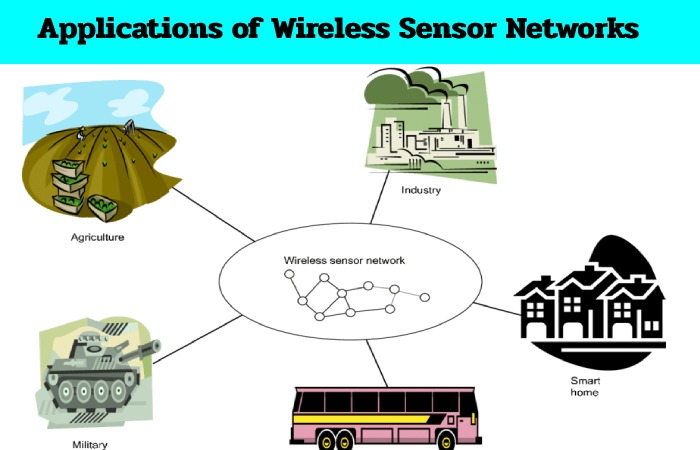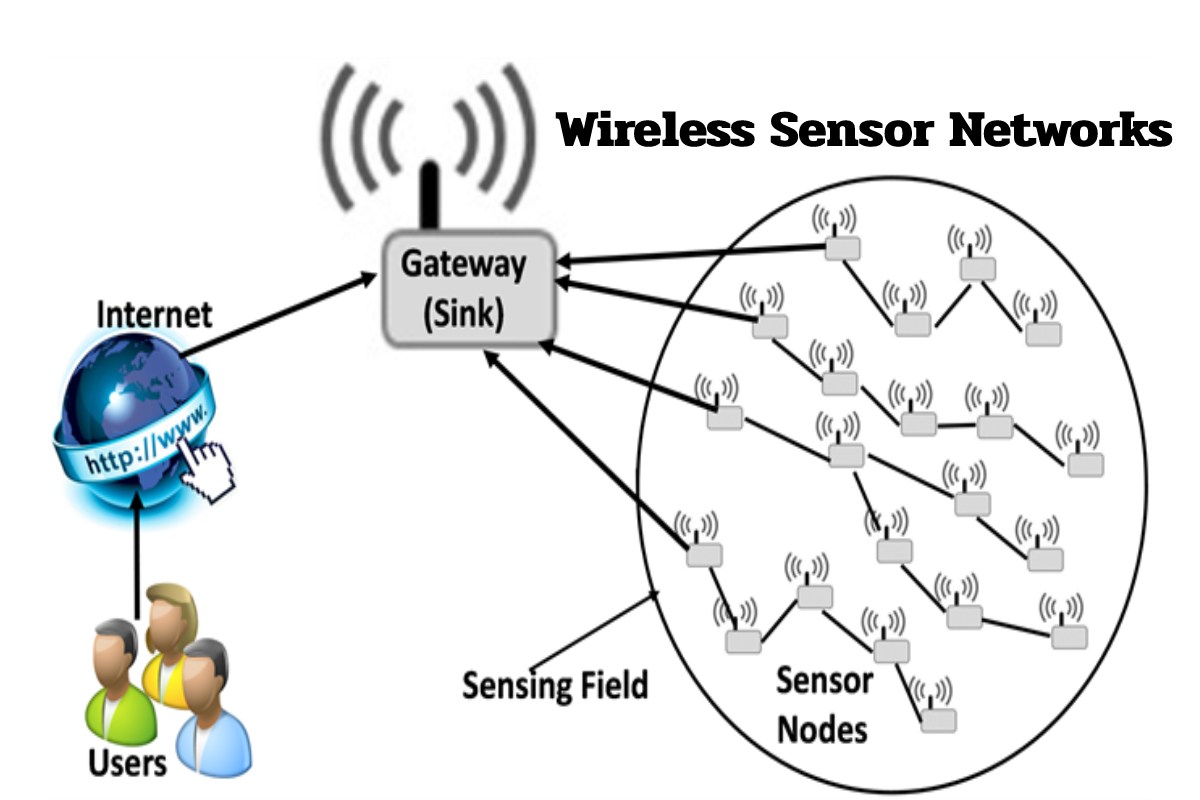What Are Wireless Sensor Networks?
Wireless Sensor Networks (WSNs) are like a team of tiny smart devices that work together without needing wires or big setups. They watch over things in the real world, like temperature, sounds, vibrations, pressure, movement, or even pollution. These sensors share what they find by sending signals through the air to a main spot, called a “sink” or base station. There, people can check and study the info.
You can ask the network for data by sending questions to it, and the base station collects the answers. A WSN might have hundreds or even thousands of these sensors. They talk to each other using radio waves. Each sensor has a few key parts: something to sense the world (like a thermometer), a tiny computer to think about the data, a radio to send messages, and a battery for power.
But these sensors are basic—they don’t have much speed, memory, or battery life. Once you place them out in the world, they have to set themselves up into a network. They often pass messages from one to another (called multi-hop) until it gets to the base. They can also follow orders from a control center, like “take a reading now!”
Why Are Wireless Sensor Networks So Cool?
WSNs are super popular because they’re flexible and can solve real problems in tons of ways. They might even change how we live! Here are some examples:
Military Uses
Soldiers use them for spying on battlefields, tracking enemies, or sharing info in command centers.
Watching Over Areas
Sensors spread out in a big space (like a forest or city) to spot dangers, like fires or floods. When something happens, they alert the base station right away.
Transportation
They track traffic in real time, spot jams, and warn drivers to take better routes.
Health and Medicine
Help people with disabilities, watch patients in hospitals, track heart rates from afar, or even monitor doctors and nurses moving around.
Environment Watching
Great for science! They check volcanoes, oceans, glaciers, or forests. Other ideas:
- Spotting air pollution
- Detecting forest fires early
- Keeping greenhouses just right
- Warning about landslides
Building and Bridge Checks
Sensors on bridges, buildings, or tunnels watch for shakes or cracks. Engineers can check from far away—no need for trips every time.
Factory and Machine Watching
They help fix machines before they break, saving money. Wires are expensive, so wireless is way better.
Farming
Farmers use them to water crops smarter, without wasting water. No more dealing with wires in muddy fields!

Challenges in Building Wireless Sensor Networks
Making WSNs isn’t easy—they’re like ad hoc (make-it-up-as-you-go) networks with no fixed wires. Plus, sensors run on tiny batteries that can’t be swapped easily. Everything has to save energy from the start. Here are the big hurdles:
Handling Failures
Sensors can break from rough spots, damage, or dead batteries. Networks need to spot problems fast and keep working, maybe by finding new paths for messages. Tough spots like battlefields need extra toughness.
Growing Big
Networks can go from a few sensors to thousands. Some areas might have sensors packed close together. Rules for the network have to work no matter the size or crowd.
Keeping Costs Low
To beat old wired ways, each sensor should cost less than $1. They’re like disposable gadgets for big jobs.
Hardware Limits
Every sensor needs basics: a sensor part, a brain (processor), a radio, and power. Extras like GPS add size, cost, and battery drain—so you have to pick wisely.
Network Shape (Topology)
Power is the biggest limit, so smart shapes save energy. Lots of tricks focus on this to make batteries last longer.
How They Talk
Most use radio waves on free air channels. Some try light or UV signals, which are super clear and don’t get jammed.
Saving Power
Everything ties back to battery life. Small size means small batteries. Software and hardware must be super efficient—like squeezing data to send less, but not wasting power on that squeeze. Some apps let sensors sleep; others need them all awake.

How Wireless Sensor Networks Are Set Up
WSNs can connect in different shapes, or topologies. Here’s a quick look at the main ones:
Star Shape (One Center to Many)
One main base talks to all the sensors around it. Sensors don’t chat with each other. Pros: Simple, saves sensor battery, quick talks to the base. Cons: Base has to reach everyone, and if it fails, everything stops.
Mesh Shape
Sensors pass messages to neighbors, even hopping through others to go far. Pros: Tough—if one breaks, others reroute. Grows easy by adding more. Cons: Hopping uses more power and takes longer for messages.
Hybrid Star-Mesh
Mix of both: Some cheap, low-power sensors just listen and report. Stronger ones (maybe plugged in) do the hopping for them. Saves power overall. This is like the ZigBee system.
Conclusion
Wireless Sensor Networks are packs of smart, wireless gadgets that sense and share data from all over—like temperature, wetness, wind speed, light, shakes, noise, chemicals, or even body signs. They’re changing how we watch the world, from farms to factories to forests!


